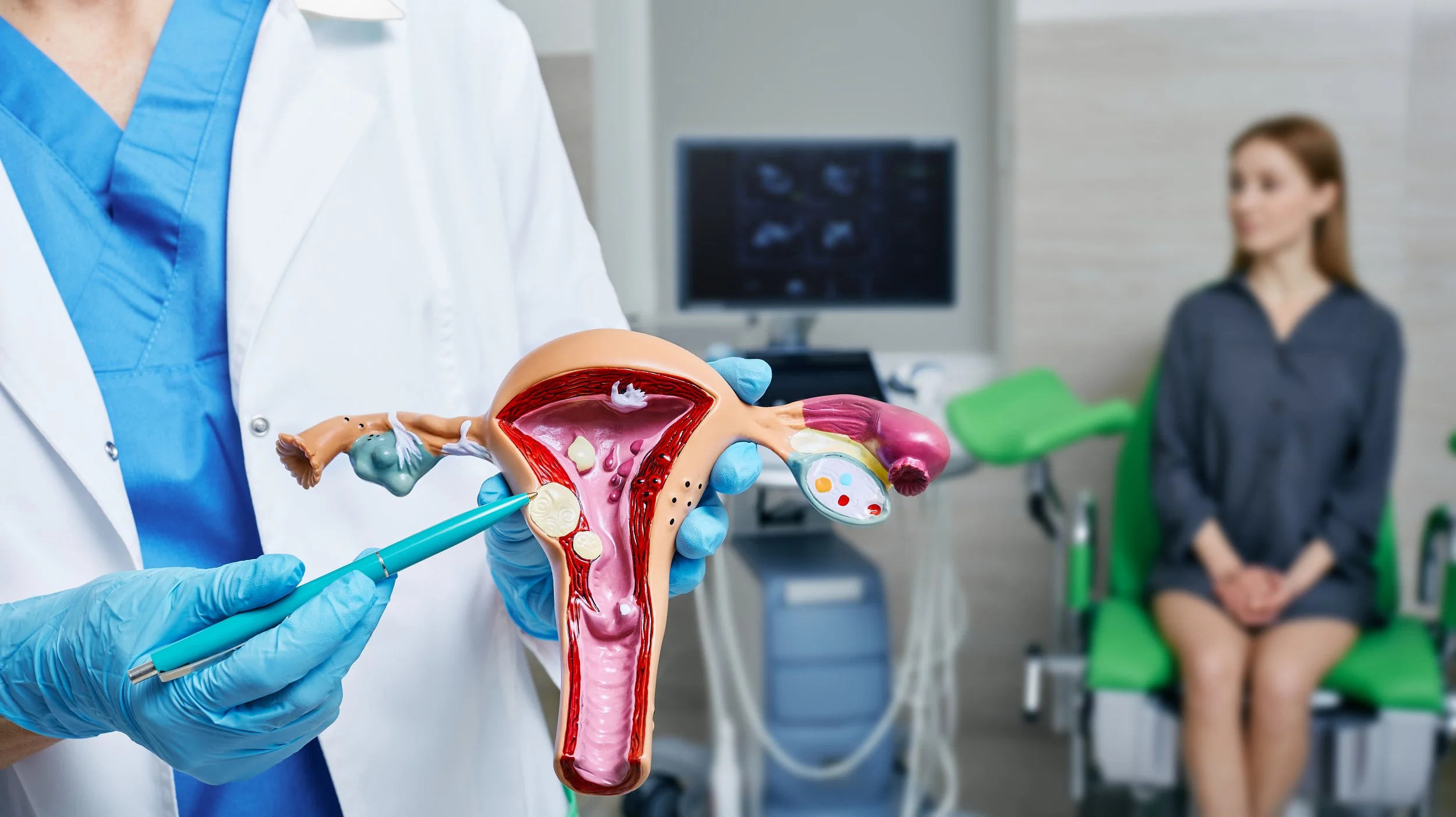
Fibroids
What are fibroids?
Uterine fibroids, also known as 'fibroids', are benign growths that develop in the uterine cavity.
While they aren't cancerous, they can grow big enough to cause discomfort and complications that can disrupt daily life.
There is no known cause for fibroids, but they are most commonly found in women in their 30s and 40s.
What are the symptoms of uterine fibroids?
Although some women may not experience any symptoms, in most cases, they will feel persistent discomfort that can range from mild to severe.
Heavy menstrual bleeding
Pelvic pain or pelvic pressure
Frequent urination
Constipation
Lower back pain
Some of the most severe symptoms of fibroids include very heavy bleeding, pain during intercourse, frequent urination, and problems passing urine.
What are the different types of fibroids?
Submucosal fibroids
Submucosal fibroids are growths that develop in the lining of the uterus and can significantly impact a woman's health. Unlike other types of fibroids, submucosal fibroids grow inside the uterus, making them much more likely to cause heavy, prolonged menstrual bleeding, abdominal pain, and discomfort during intercourse.
Subserosal fibroids
Subserosal fibroids are a type of uterine fibroid that grow just below the outer layer of the uterus. These are the most common type of fibroids and can grow to be quite large, causing discomfort and pain for many women.
Intramural fibroids
Exophytic fibroids
These non-cancerous growths develop within the muscular wall of the uterus, and while they may not always cause symptoms, they can be quite uncomfortable or even painful when they do.
Exophytic fibroids are a type of uterine fibroid that grow outside of the uterus, instead of within its muscular walls. While they are not always problematic, they can cause pain or discomfort if they become too large or press against surrounding organs.

How are fibroids diagnosed?
Medical history
First we will take your history of medical issues, including if you have family members who have had fibroids in the past.
Pelvic exam
During a pelvic exam for diagnosing fibroids, a doctor will use a speculum to visually inspect the cervix and vagina, as well as feel for any abnormal growths or changes in the size and shape of the uterus.
Ultrasound
After getting a routine pelvic exam, ultrasound is the next step to diagnose fibroids. It's safe, painless, and an essential tool in diagnosing and treating fibroids.
Ultrasound machines use high-frequency sound waves, which reflect off your body structure to make a detailed image. As a result, we can then identify the location and size of your fibroids.
MRI
In some cases, an MRI test can be used to diagnose fibroids. It better characterizes a woman’s uterine fibroids in terms of number, location, size, and determines if any other abnormalities could be causing your symptoms
What factors put women at risk for developing fibroids?
Being a Black woman
Black women in particular are more likely than any other group to develop them, possibly due to higher levels of a gene called VWF.
Being over 30-years-old
While the exact reasons are still unclear, researchers suggest that changes in estrogen and progesterone levels may be the main trigger for fibroid growth in older women.
Those with a direct family member (mother, sister) who has had fibroids
Research suggests this risk is three times higher for those with a first-degree relative (mother, sister) who has fibroids compared to those without.
Do fibroids need to be treated?
At Florida Vascular Specialists, we believe that fibroids only need treatment when it's affecting your enjoyment of daily life. So, you may have fibroids but not even know it because you're not experiencing symptoms.
What fibroid treatment is out there?
Uterine fibroid embolization
Uterine fibroid embolization is a minimally invasive procedure used to treat symptomatic uterine fibroids. This procedure uses the body's own blood vessels to reduce the blood supply to the fibroids, causing them to shrink over time. Unlike traditional surgery, which involves removing the entire uterus or fibroid, uterine fibroid embolization allows patients to keep their uterus and avoid major incisions.
It's an outpatient procedure, so you can leave just hours after.
Return to work in just a matter of days with UFE rather than missing weeks of work with a hysterectomy.




